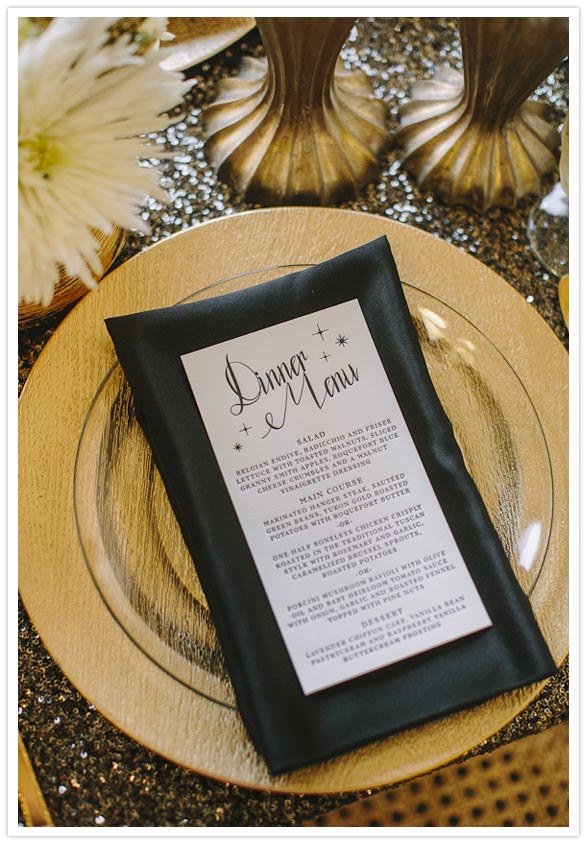'); } //]]>?
Tailored Intervention
The Active Plus interventions are designed to stimulate or maintain PA among people over 50 years of age. These computer-tailored, theory- and evidence-based interventions were systematically developed using the intervention mapping protocol [20,22]. Originally, 2 print-delivered Active Plus interventions were developed and tested for effectiveness. The first was a basic computer-tailored intervention (tailored to personal and psychosocial characteristics). The second was the same intervention extended with additional environmental components that focused on giving tailored advice on local options and initiatives for being physically active. The additional environmental components intended to positively change peoples? perceptions of the possibilities to be physically active in their own locale [21]. Both interventions aimed to influence awareness, initiation, and maintenance of PA by targeting premotivational constructs (ie, awareness and knowledge), motivational constructs (ie, attitude, self-efficacy, social influence, intrinsic motivation, and intention), and post-motivational constructs (ie, commitment, strategic planning, self-regulation skills, action planning, and coping planning) [20]. Previous studies showed that both print-delivered interventions were effective in stimulating PA among people over 50 years of age [23,24].
In 2010, both of the print-delivered interventions described above were adapted and translated into a Web-based intervention [22] using the RE-AIM framework. The content of the Web-based intervention was identical to that of the print-delivered interventions, but the display output of the interactive components in the Web-based version was different (eg, static modelling pictures were transferred into videos, a print-delivered map was transferred into Google Maps, and several hyperlinks were added).
Based on their answers given in the assessments [20,22], participants received tailored advice on 3 occasions (Figure 1): (1) within 2 weeks after the baseline assessment, (2) 2 months after the baseline assessment, and (3) within 4 months after the baseline assessment (based on the second assessment). The Web-based intervention participants received an email with a link that connected them with their online tailored advice. Additionally, they received an email with a copy of the personal advice in the same format as the print-delivered version. The tailored advice contained between 5 and 11 pages of text and illustrations, depending on changes in PA behavior and determinant scores. A more detailed description of the intervention content can be found elsewhere [20,22].
Participants and Procedure
Intervention participants (adults over 50 years of age) were recruited via direct mailing in communities of the participating Municipal Health Council (MHC) regions (N=5; excluding control group participants). To prevent participants from the different intervention conditions contaminating each other, the intervention conditions were located in separate but comparable MHC regions. The regions were randomly assigned to one of the different intervention conditions (ie, Web-based basic, Web-based environment, printed basic, or printed environment). All participants were assigned to one of the intervention conditions based on their region and could not make a choice in the delivery mode of the intervention. This design offers optimal insight into the consequences for response and attrition when using only 1 of the 2 modes for intervention delivery.
For each intervention condition, we selected 14 (matched) neighborhoods: 6 less urban neighborhoods (500-1000 addresses per km2) and 8 modestly urban neighborhoods (1000-1500 addresses per km2, Figure 2). We matched the neighborhoods based on their urban character, percentage of people with a low SES, percentage of people with a high SES, percentage of immigrants (also to ensure that we reached mostly Dutch-speaking people), and the percentage of people over 50 years of age. This information was provided by the Dutch Central Bureau for Statistics. Each MHC provided a random sample of eligible participants living in the selected matched neighbourhoods after stratification for age. Therefore, the distribution of differences in age and SES among the invited adults was expected to be equal between the intervention conditions.
In the regions of the print-delivered intervention, a sample of eligible participants (n=4648) received an invitation for the print-delivered intervention. This invitation included an information letter, a questionnaire, a prepaid return envelope, and a form to give informed consent. Because we expected a lower response in the Web-based intervention conditions, we included a larger sample of eligible participants (n=7168) in the regions of the Web-based intervention. Eligible participants received an invitation via written mail, containing a similar information letter about the project, additional information about how to complete an online questionnaire, and a personal username and password to log on to the Active Plus website. People who did not receive an invitation could not participate in this program. A power calculation (effect size=0.4, power=80%, intracluster correlation coefficient =.1) showed that at baseline about 420 participants were needed for each intervention condition (considering a dropout rate of 40% during the 1-year follow-up based on a previous Active Plus study) [22].
Within both the Web-based and print-delivered intervention groups, participants received the basic tailored intervention or the basic intervention with additional environmentally tailored information, depending on their MHC region. Since the aim of this study was only to investigate how the delivery channel (printed or Web-based) and user characteristics are related to dropout and attrition, and not to determine how the content of the message (eg, providing additional environmental information) influences attrition, both of the print-delivered and both of the Web-based intervention groups were considered together. Dropout analyses were corrected for the possible influence of the intervention type.
Participants were enrolled when they completed the baseline questionnaire. For the second assessment, participants of the print-delivered intervention group received an invitation by written mail, which included the follow-up questionnaire and a prepaid return envelope. Participants of the Web-based intervention group received invitations for the follow-up assessment by email, which included a link to the Web-based questionnaire. All participants were asked to complete the questionnaire within 2 weeks. Participants of the print-delivered intervention group who did not complete the questionnaire received a reminder by mail after 2 weeks. Since the response was lower in the Web-based intervention group than in the print-delivered intervention group and sending reminders electronically does not result in additional postage costs, for the follow-up assessment the Web-based intervention group received multiple reminders (9 days and 18 days after the invitation). Since it was not guaranteed that our target population received the online reminders (eg, redirected to spam folders), this group also received an additional reminder by written mail.
This study is approved by the Medical Ethics Committee of Atrium-Orbis-Zuyd (code 10-N-36) and was registered in the Dutch Trial Register NTR 2297.
'); } //]]>?
Measurements
The baseline questionnaire included questions about demographics, PA behavior, and sociocognitive determinants of PA behavior. Demographic variables included age, gender, height, weight, and highest education level completed. Education level was categorized into low (primary, basic vocational, or lower general school) and high (higher general secondary education, preparatory academic education, medium vocational school, higher vocational school, or university level), according to the Dutch education system. Body mass index (BMI) was calculated by dividing weight in kilograms by height in metres squared [23]. Participants were classified as being underweight (BMI < 18.5 kg/m2), a healthy weight (BMI 18.5?24.9 kg/m2), or overweight (BMI > 25 kg/m2).
Total weekly days and minutes of PA were measured using the validated self-administered Dutch Short Questionnaire to Assess Health Enhancing Physical Activity (SQUASH) [31]. This questionnaire allows the calculation of the total minutes of moderate- and vigorous-intensity activity per week. It also helps classify participants according to the international guideline for sufficient PA (PA guideline), which is being physically active with moderate to vigorous intensity for at least 30 minutes per day at least 5 days per week [32,33]. The participants? intention to be sufficiently physically active (according to the international PA guideline) was assessed using three items on a 10-point scale (eg, ?To what degree do you intend to be sufficiently physically active?? 1 = Absolutely not, to 10 = Absolutely).
For process evaluation purposes, we asked participants whether they had actually read the advice (?Yes? or ?No?) in the second questionnaire (after 3 months, following the first and second sets of tailored advice) and again in the third questionnaire (after 6 months, following the third provision of tailored advice).
Statistical Analysis
Response and Baseline Characteristics of the Study Population
We analyzed data for participants who completed the baseline questionnaire. We performed descriptive statistics on age, gender, education level, BMI, baseline PA, and intention to be sufficiently physically active to describe the characteristics of the participants. We used univariate one-way analyses of variance (ANOVA) and chi-square tests to determine whether the participants in the print-delivered and Web-based interventions differed on baseline characteristics. Furthermore, we used a chi-square test to find out whether the intervention types (ie, the basic tailored intervention or the tailored intervention with additional environmental information) were equally distributed to the print-delivered and Web-based intervention groups. There was no need to correct baseline data for the intervention type because the content of the baseline questionnaire was similar for all intervention groups.
Dropout Analysis
We performed hierarchical logistic regression analyses to determine whether participants? characteristics were predictors of dropout at the 3-month questionnaire, correcting for intervention type (ie, basic or environmental intervention). We added the user characteristics (ie, age, gender, SES, BMI, intention, and PA behavior) to the second block of the regression analysis. To study whether the delivery mode of the intervention was related to participant dropout, we added the intervention delivery mode to the third block of the regression analysis. The influence of the delivery mode on participant dropout was thus corrected for by user characteristics. The fourth block of the regression analysis contained the interaction terms between the delivery mode and the user characteristics, to determine whether participant dropout was related to certain user characteristics in a specific delivery mode. Because the interaction terms have less power, the significance levels the interaction terms are defined at P=.10 [34]. When a significant interaction term was found, we performed subgroup analyses separately for the print-delivered and Web-based groups. All analyses were performed using SPSS version 18.0.
Response and Baseline Characteristics of the Study Population
A total of 874 adults participated in the print-delivered intervention (response rate of 18.8%) and 855 adults participated in the Web-based intervention (response rate of 11.9%, Figure 3). Baseline characteristics for both intervention groups are shown in Table 1. We found significant differences between the intervention groups with respect to several characteristics. The sample for the Web-based intervention consisted of more men than the sample for the printed intervention (P=.01). Participants in the Web-based intervention were significantly younger (P<.001) and had a significantly higher BMI (P=.001) than the participants of the print-delivered intervention. We found no significant differences between low and high education level among the participants. Regarding PA behavior, the total minutes of moderate to vigorous PA did not differ significantly between the groups. The print-delivered intervention group had a significantly higher intention to be sufficiently physically active (P=.03). Participants of the print-delivered and Web-based intervention groups were equally distributed with respect to the basic and the environmental intervention types.
'); } //]]>?
Response
The present study aimed to assess differences in user characteristics related to participation and attrition when comparing a print-delivered intervention and Web-based intervention to stimulate PA among people over 50 years of age. Our study showed that, in this population, the response rate to the print-delivered PA intervention (n=874/4648, 18.8%) was higher than the response rate to the Web-based intervention (n=855/7168, 11.9%). This finding indicates that using a computer might still be a barrier to participation. The difference in response rate may be due to a lack of motivation or limited skills in using the Internet among the target population. This difference is also acknowledged by Venkatesh?s unified theory of acceptance and use of technology (UTAUT). According to this theory, performance and effort expectancy explain a large proportion of the variance in the intention to use a new technology [35]. This may imply that older adults? skills and self-efficacy in computer usage need to be increased to stimulate the adoption of Web-based interventions. Future researchers should study these barriers further, and may need to incorporate additional information or computer training in their recruitment or intervention to increase the computer skills and self-efficacy of older adults. However, differences in self-efficacy and computer skills among generations might decrease rapidly, since the adults of the current generation have more developed computer skills and are the elderly of the future.
Response rates in Web-based interventions reported in the literature vary substantially between studies. Differences can be caused either by the methodology of the study or by the characteristics of the population. Researchers have conducted several Web-based interventions in populations with known access to the Internet, which resulted in higher response rates than studies in populations without known access [15]. Discovering a lower response rate to a Web-based intervention compared to a print-delivered intervention is in agreement with the findings of a study by Kongved et al [15] that was conducted in a population without known Internet access. The study further showed that after a reminder, when the participants were free to choose between delivery modes, the total response rate was similar in the 2 groups. Similarly, a study by Ekman et al [36] showed that response rates were highest when 2 response methods (ie, print-delivered and Web-based) were offered. In our study, participants of the Active Plus intervention could not choose between delivery modes because different intervention conditions were located in different regions, which prevented participants contaminating each other?s responses. Offering both delivery modes to the participants might have resulted in higher response rates, but would not have provided insight into the actual use of different single-delivery modes.
Another reason for the low response rate could be the length of our questionnaire. A review [37] to identify effective strategies to increase the response to postal and electronic questionnaires showed that the odds of response increased by more than half when participants received shorter questionnaires. The response rate improved with shorter print-delivered questionnaires (odds ratio (OR) 1.64) as well as in studies using electronic questionnaires (OR 1.73), compared to participants given longer questionnaires. Due to research requirements, filling in the Active Plus questionnaires took quite some time (the baseline questionnaire is about 24 pages). In a real-life setting, when no additional questions for research purposes are required, the length of the questionnaires can be shortened, which might result in a higher response rate and limit the dropout rates of the intervention.
We found significant differences between the print-delivered and Web-based intervention groups with respect to several characteristics. The sample for the Web-based intervention was significantly younger and consisted of more men. Both findings can be supported by epidemiological evidence that shows that Internet access is still lower in the over 65 age group, and that men use the Internet more frequently and intensively than women [7,8].
Furthermore, participants of the Web-based intervention had a significantly higher BMI and a lower intention to be sufficiently physically active. This might indicate that adults over 50 years of age who have a low intention to be sufficiently physically active might best be reached using a Web-based intervention. Together with the finding that the majority (480/842, 57.0%) of the Web-based intervention group had an unhealthy BMI, Web-based interventions might be the preferred medium to reach this high-risk population. These differences in user characteristics between print-delivered and Web-based intervention groups should also be taken into consideration when determining the possible effects of the intervention in different delivery modes. However, differences in participant dropout rate between both delivery modes should also be acknowledged.
In contrast to our expectations, no differences were found in education level between the Web-based and print-delivered intervention groups. This is in contrast to several other studies that show that Web-based interventions have a higher reach among high SES populations [38,39]. Possibly, education level is less important to Internet usage in an older population than in the general population. This finding can be explained further by the fact that one of the highest shares of home Internet access in Europe was recorded in the Netherlands (94% in 2011) [8], where differences in Internet access between SES groups has declined rapidly. As epidemiological data shows, in 2010, at the moment of implementing the Active Plus interventions, 87% of the low SES group and 98% of the high SES group in the general population had Internet access [7]. In 2011, the low SES group further increased their Internet access to 90% [7].
Dropout
Since the Active Plus intervention contains multiple provisions of advice, it is important that people continue their participation in the intervention. Our results show that only 61.1% (534/874) of the print-delivered intervention group and only 47.0% (402/855) of the Web-based intervention group filled in the second questionnaire and were thus eligible to receive the third follow-up tailored advice. Furthermore, the number of participants who reported reading their advice was substantially smaller in the Web-based intervention than in the print-delivered intervention. Participant dropout within the intervention period was therefore significantly higher in the Web-based intervention group than in the print-delivered intervention group. The difference in participant dropout rate between the intervention conditions was not explained by user characteristics. We found a significant interaction between the delivery mode and the participants? age in the prediction of participant dropout. Subgroup analyses showed that whereas age was not a predictor of participant dropout in the print-delivered group, there was an indication (almost significant predicator (P=.05)) that younger participants were more likely to drop out from the Web-based intervention. The finding that older adults are more likely to revisit the website is in line with other studies [12,40].
In both delivery modes, a low intention to be physically active was a significant predictor of participant dropout. It is self-evident that people with a lower intention to remain physically active are less likely to continue their participation. Since we also found that low intention participants more often participate in Web-based interventions, this would consequently lead to a higher dropout rate for Web-based interventions. Hence, additional strategies are needed to motivate adults with a low intention to continue their participation in health-promoting interventions. If these participants are less motivated by their health intention, this group needs additional motivators to continue. For example, motivation could be improved by making the intervention more exciting by including gaming elements or by focusing on other aspects besides health, such as news elements, sports games, or social activities.
Since participant dropout was significantly higher in the Web-based intervention and no significant factor was found for user characteristics explaining the differences in dropout rate between the delivery modes, the higher dropout in Web-based interventions must be related to other characteristics. A possible explanation is that it might require more planning to fill in a Web-based questionnaire than a print-delivered questionnaire. A print-delivered questionnaire can be filled in anywhere at anytime, while filling in an online questionnaire restricts one to a computer. Furthermore, in a printed questionnaire, the time required to fill in the questionnaire is more visible (you see the total package in one overview), and it is easier to continue filling in a printed questionnaire after pausing, rather than continuing a Web-based questionnaire, due to loading times and additional log-ins.
Strengths and Limitations
Although this study provides interesting data, some limitations should be noted. First of all, no information was available on those who did not respond to the intervention. We could have performed more predictive analyses if information about the nonparticipants was available to provide insight into the selection process. Second, participants could not choose between the different modes of delivery. They could only choose whether they would like to participate in the intervention with the particular delivery mode that was offered. Giving participants the option to choose between the delivery modes could provide additional insights into the reasons why people participate in a certain intervention. However, not allowing participants to choose between the delivery modes is also a strength?it gave us the opportunity to study the resultant absolute participation and attrition rates for a given delivery mode. In a real-life setting, an intervention is usually offered in only 1 delivery mode because offering both delivery modes results in additional planning and administration. The current design offers optimal insight into the consequences of using 1 of the 2 delivery modes.
Another limitation of this study is that the program evaluation (to assess whether the participants had read the advice) took place several months after the participants received their tailored advice. As a result, some recall bias might have occurred. For future evaluation studies, we recommend sending a short program evaluation questionnaire after each tailored advice to limit recall bias, or to include multiple questions to validate their report.
To our knowledge, this is the only study that compares the characteristics of users related to the use and participant dropout rate of a Web-based intervention and a print-delivered intervention with similar content in an older population. Since older adults are one of the fastest growing online user groups and tend to have the most interest in and need for health advice compared to other age groups [9,10], it is important to gain more insight into this population?s user characteristics. Furthermore, we conducted our study on a large and diverse target population in which both low and high SES subgroups were represented. By stratifying invitees by age and SES at a neighborhood level, we could compare the response rates of the print-delivered and Web-based intervention conditions.
Conclusion
The results of our study suggest that the response to a Web-based intervention is significantly lower than a print-delivered intervention among Dutch people over 50 years of age, and participants with different characteristics were attracted by different delivery modes. Participants with a low intention to be physically active and a high BMI were more attracted by the Web-based intervention, indicating that Web-based interventions might be a good medium to reach this high-risk population.
Although participant dropout was significantly higher in the Web-based intervention, no significant factors were found for user characteristics explaining the differences in participant dropout between the delivery modes. This indicates that the higher dropout rate in Web-based interventions is potentially relevant for all demographic groups and related to characteristics not measured in this study.
Our study has provided important new insights into the differences in user characteristics of participants in a print-delivered or Web-based intervention in an older population. These findings are important when selecting the delivery mode of an intervention that aims to optimize exposure to a certain subgroup and when interpreting and generalizing results of randomized controlled effectiveness trials. Since Internet use is growing rapidly in older populations, more research is needed to explore the prolonged use, appreciation, and effectiveness of Web-based interventions compared to print-delivered interventions in this population. The low cost of Web-based interventions can provide an opportunity to reach more of the population, if the effectiveness of the intervention method can be improved. Furthermore, more research is needed to investigate strategies that limit the high dropout rates in Web-based interventions (especially among participants with a low PA intention) and to ensure a sustained intervention effect.
Acknowledgments
DPE wrote the first draft of the manuscript. MVS designed the original (print-delivered) intervention. RGO and DPE translated this intervention into a Web-based intervention. Both processes have been supervised by ELE, HDV, CBO, and AMU. DPE and RGO conducted the study. All authors read, modified, and approved the final manuscript.
This study was funded by The Netherlands Organization for Health Research and Development (ZonMw, 200110006), and publication was supported by the Netherlands Organization for Scientific Research (NWO). We would like to thank the Municipal Health counsellors that participated in this project.
Conflicts of Interest
None declared.
References
- ?de Vries H, Brug J. Computer-tailored interventions motivating people to adopt health promoting behaviours: introduction to a new approach. Patient Educ Couns 1999 Feb;36(2):99-105. [Medline]
- ?Krebs P, Prochaska J, Rossi J. A meta-analysis of computer-tailored interventions for health behavior change. Prev Med 2010;51(3-4):214-221 [FREE Full text] [CrossRef] [Medline]
- ?Kreuter M, Skinner C. Tailoring: what's in a name? Health Educ Res 2000 Feb;15(1):1-4 [FREE Full text] [Medline]
- ?Noar S, Benac C, Harris M. Does tailoring matter? Meta-analytic review of tailored print health behavior change interventions. Psychol Bull 2007 Jul;133(4):673-693. [CrossRef] [Medline]
- ?Kreuter M, Farrell D, Olevitch L, Brennan L. Tailoring health messages: customizing communication with computer technology. Mahwah, N.J: Lawrence Erlbaum Associates; 1999.
- ?Griffiths F, Lindenmeyer A, Powell J, Lowe P, Thorogood M. Why are health care interventions delivered over the internet? A systematic review of the published literature. J Med Internet Res 2006;8(2):e10 [FREE Full text] [CrossRef] [Medline]
- ?Statistiek CBVD. Statline ?
 URL: http://statline.cbs.nl/statweb/ [accessed 2011-08-12] [WebCite Cache]
URL: http://statline.cbs.nl/statweb/ [accessed 2011-08-12] [WebCite Cache] - ?Eurostat. Internet use in households and by individuals in 2011. ?
 URL: http://epp.eurostat.ec.europa.eu/cache/ITY_OFFPUB/KS-SF-11-066/EN/KS-SF-11-066-EN.PDF [accessed 2012-12-04] [WebCite Cache]
URL: http://epp.eurostat.ec.europa.eu/cache/ITY_OFFPUB/KS-SF-11-066/EN/KS-SF-11-066-EN.PDF [accessed 2012-12-04] [WebCite Cache] - ?Centre for Disease Control and Prevention. Health information for older adults. ?
 URL: http://www.cdc.goc/aging/info.htm [accessed 2009-08-28] [WebCite Cache]
URL: http://www.cdc.goc/aging/info.htm [accessed 2009-08-28] [WebCite Cache] - ?Van Deursen AJAM, Van Dijk JAGM. Trendrapport Computer- en Internetgebruik 2010. Een Nederlands en Europees perspectief. Enschede: Universiteit Twente; 2010 Nov 19. ?
 URL: http://www.utwente.nl/ctit/cfes/docs/rapporten/2010_11_trendrapportcomputersinternet.pdf [accessed 2012-12-04] [WebCite Cache]
URL: http://www.utwente.nl/ctit/cfes/docs/rapporten/2010_11_trendrapportcomputersinternet.pdf [accessed 2012-12-04] [WebCite Cache] - ?Brouwer W, Oenema A, Raat H, Crutzen R, de Nooijer J, de Vries N, et al. Characteristics of visitors and revisitors to an Internet-delivered computer-tailored lifestyle intervention implemented for use by the general public. Health Educ Res 2010 Aug;25(4):585-595 [FREE Full text] [CrossRef] [Medline]
- ?Van 't Riet J, Crutzen R, De Vries H. Investigating predictors of visiting, using, and revisiting an online health-communication program: a longitudinal study. J Med Internet Res 2010;12(3):e37 [FREE Full text] [CrossRef] [Medline]
- ?Leece P, Bhandari M, Sprague S, Swiontkowski M, Schemitsch E, Tornetta P, et al. Internet versus mailed questionnaires: a randomized comparison. J Med Internet Res 2004 Sep 24;6(3):e30 [FREE Full text] [CrossRef] [Medline]
- ?B?lter K, B?lter O, Fondell E, Lagerros Y. Web-based and mailed questionnaires: a comparison of response rates and compliance. Epidemiology 2005 Jul;16(4):577-579. [Medline]
- ?Kongsved S, Basnov M, Holm-Christensen K, Hjollund N. Response rate and completeness of questionnaires: a randomized study of Internet versus paper-and-pencil versions. J Med Internet Res 2007;9(3):e25 [FREE Full text] [CrossRef] [Medline]
- ?Glasgow R, McKay H, Piette J, Reynolds K. The RE-AIM framework for evaluating interventions: what can it tell us about approaches to chronic illness management? Patient Educ Couns 2001 Aug;44(2):119-127. [Medline]
- ?Glasgow R. eHealth evaluation and dissemination research. Am J Prev Med 2007 May;32(5 Suppl):S119-S126. [CrossRef] [Medline]
- ?McGuire W. Attitudes and attitude change. In: Lindzey G, Aronson E, , editors. Handbook of social psychology. New York: Random House; 1985:233-346.
- ?Glasgow R, Vogt T, Boles S. Evaluating the public health impact of health promotion interventions: the RE-AIM framework. Am J Public Health 1999 Sep;89(9):1322-1327. [Medline]
- ?van Stralen M, Kok G, de Vries H, Mudde A, Bolman C, Lechner L. The Active Plus protocol: systematic development of two theory- and evidence-based tailored physical activity interventions for the over-fifties. BMC Public Health 2008;8:399 [FREE Full text] [CrossRef] [Medline]
- ?van Stralen M, de Vries H, Mudde A, Bolman C, Lechner L. The working mechanisms of an environmentally tailored physical activity intervention for older adults: a randomized controlled trial. Int J Behav Nutr Phys Act 2009;6:83 [FREE Full text] [CrossRef] [Medline]
- ?Peels D, van Stralen M, Bolman C, Golsteijn R, de Vries H, Mudde A, et al. Development of web-based computer-tailored advice to promote physical activity among people older than 50 years. J Med Internet Res 2012;14(2):e39 [FREE Full text] [CrossRef] [Medline]
- ?van Stralen M, de Vries H, Mudde A, Bolman C, Lechner L. The long-term efficacy of two computer-tailored physical activity interventions for older adults: main effects and mediators. Health Psychol 2011 Jul;30(4):442-452. [CrossRef] [Medline]
- ?van Stralen M, de Vries H, Mudde A, Bolman C, Lechner L. Efficacy of two tailored interventions promoting physical activity in older adults. Am J Prev Med 2009 Nov;37(5):405-417. [CrossRef] [Medline]
- ?Peels D. Bevorderen van fysieke activiteit bij 50-plussers met behulp van een computer gebaseerd advies op maat. In De Vries, H. (Chair), Online computer tailoring: een veelbelovende strategie binnen eHealth. VU; 2012 Presented at: Dutch Health congress (Nederlands congres Volksgezondheid); 2012; Amsterdam, The Netherlands.
- ?Eysenbach G. The law of attrition. J Med Internet Res 2005;7(1):e11 [FREE Full text] [CrossRef] [Medline]
- ?Kroeze W, Werkman A, Brug J. A systematic review of randomized trials on the effectiveness of computer-tailored education on physical activity and dietary behaviors. Ann Behav Med 2006 Jun;31(3):205-223. [CrossRef] [Medline]
- ?Marks J, Campbell M, Ward D, Ribisl K, Wildemuth B, Symons M. A comparison of Web and print media for physical activity promotion among adolescent girls. J Adolesc Health 2006 Jul;39(1):96-104. [CrossRef] [Medline]
- ?Marshall A, Leslie E, Bauman A, Marcus B, Owen N. Print versus website physical activity programs: a randomized trial. Am J Prev Med 2003 Aug;25(2):88-94. [Medline]
- ?Spittaels H, De Bourdeaudhuij I. Who participates in a computer-tailored physical activity program delivered through the Internet? A comparison of participants' and non-participants' characteristics. Int J Behav Nutr Phys Act 2007;4:39 [FREE Full text] [CrossRef] [Medline]
- ?Wendel-Vos G, Schuit A, Saris W, Kromhout D. Reproducibility and relative validity of the short questionnaire to assess health-enhancing physical activity. J Clin Epidemiol 2003 Dec;56(12):1163-1169. [Medline]
- ?Department of Health. At least five a week: Evidence on the impact of physical activity and its relationship to health. London: Department of Health; 2004. ?
 URL: http://image.guardian.co.uk/sys-files/Society/documents/2004/04/29/At_least5aweek.pdf [accessed 2012-12-04] [WebCite Cache]
URL: http://image.guardian.co.uk/sys-files/Society/documents/2004/04/29/At_least5aweek.pdf [accessed 2012-12-04] [WebCite Cache] - ?Hildebrandt V, Ooijendijk W, Hopman-Rock M. Trendrapport Bewegen en Gezondheid 2004/2005. Leiden: TNO Kwaliteit van Leven; 2007. ?
 URL: http:/?/www.?nasb.nl/?nasb-checklist-gemeenten/?actieve-leefstijl/?trend-rapport-bewegen-en-gezondheid-2004_2005_1_.?pdf [accessed 2012-12-04] [WebCite Cache]
URL: http:/?/www.?nasb.nl/?nasb-checklist-gemeenten/?actieve-leefstijl/?trend-rapport-bewegen-en-gezondheid-2004_2005_1_.?pdf [accessed 2012-12-04] [WebCite Cache] - ?Twisk J. Applied multilevel analysis: a practical guide. Cambridge, UK: Cambridge University Press; 2006.
- ?Venkatesh V, Morris M, Davis G, Davis F. User acceptance of information technology: Toward a unified view. MIS Quarterly: Management Information Systems 2003;27:425-478 [FREE Full text] [WebCite Cache]
- ?Ekman A, Dickman P, Klint A, Weiderpass E, Litton J. Feasibility of using web-based questionnaires in large population-based epidemiological studies. Eur J Epidemiol 2006;21(2):103-111. [CrossRef] [Medline]
- ?Edwards P, Roberts I, Clarke M, Diguiseppi C, Wentz R, Kwan I, et al. Methods to increase response to postal and electronic questionnaires. Cochrane Database Syst Rev 2009(3):MR000008. [CrossRef] [Medline]
- ?Anderson-Bill E, Winett R, Wojcik J. Social cognitive determinants of nutrition and physical activity among web-health users enrolling in an online intervention: the influence of social support, self-efficacy, outcome expectations, and self-regulation. J Med Internet Res 2011;13(1):e28 [FREE Full text] [CrossRef] [Medline]
- ?Neville L, O'Hara B, Milat A. Computer-tailored physical activity behavior change interventions targeting adults: a systematic review. Int J Behav Nutr Phys Act 2009;6:30 [FREE Full text] [CrossRef] [Medline]
- ?Verheijden M, Jans M, Hildebrandt V, Hopman-Rock M. Rates and determinants of repeated participation in a web-based behavior change program for healthy body weight and healthy lifestyle. J Med Internet Res 2007;9(1):e1 [FREE Full text] [CrossRef] [Medline]
?
Abbreviations
| ANOVA: univariate one-way analyses of variance |
| BMI: body mass index |
| MHC: Municipal Health Council |
| OR: odds ratio |
| PA: physical activity |
| RCT: randomized controlled trial |
| SES: socioeconomic status |
| SQUASH: short questionnaire to assess health enhancing physical activity |
| UTAUT: Venkatesh?s unified theory of acceptance and use of technology |
| Edited by G Eysenbach; submitted 18.06.12; peer-reviewed by P Krebs; comments to author 31.08.12; revised version received 12.09.12; accepted 12.09.12; published 17.12.12 Please cite as:
Peels DA, Bolman C, Golsteijn RHJ, De Vries H, Mudde AN, van Stralen MM, Lechner L
Differences in Reach and Attrition Between Web-Based and Print-Delivered Tailored Interventions Among Adults over 50 Years of Age: Clustered Randomized Trial
J Med Internet Res 2012;14(6):e179
URL: http://www.jmir.org/2012/6/e179/
doi: 10.2196/jmir.2229
PMID: Export Metadata:
BibTeX, compatible with BibDesk, LaTeX
RIS, compatible with RefMan, Procite, Endnote, RefWorks
Refer, compatible with Endnote
Add this article to your Mendeley library
Add this article to your CiteULike library
Add this article to your Connotea library |
Copyright
?Denise Astrid Peels, Catherine Bolman, Rianne Henrica Johanna Golsteijn, Hein De Vries, Aart Nicolaas Mudde, Maartje Marieke van Stralen, Lilian Lechner. Originally published in the Journal of Medical Internet Research (http://www.jmir.org), 17.12.2012. This is an open-access article distributed under the terms of the Creative Commons Attribution License (http://creativecommons.org/licenses/by/2.0/), which permits unrestricted use, distribution, and reproduction in any medium, provided the original work, first published in the Journal of Medical Internet Research, is properly cited. The complete bibliographic information, a link to the original publication on http://www.jmir.org/, as well as this copyright and license information must be included.
Source: http://www.jmir.org/2012/6/e179/
edgar rice burroughs dallas clark litter marinol flight attendant pau gasol trade michael madsen





 Let's face it -- we've all wanted to farm tasks onto someone else when we didn?t have the time or the mental resources to devote to them, but some things are too sensitive or too peculiar to trust to just anyone. As it happens, a stealthy Tulsa, OK-based startup called
Let's face it -- we've all wanted to farm tasks onto someone else when we didn?t have the time or the mental resources to devote to them, but some things are too sensitive or too peculiar to trust to just anyone. As it happens, a stealthy Tulsa, OK-based startup called  I wouldn't have an iPad if I didn't have to do two things: Cook and do interviews. The first I have to do for work but the second I do for fun. Which is why I think that Snapguide's
I wouldn't have an iPad if I didn't have to do two things: Cook and do interviews. The first I have to do for work but the second I do for fun. Which is why I think that Snapguide's

















